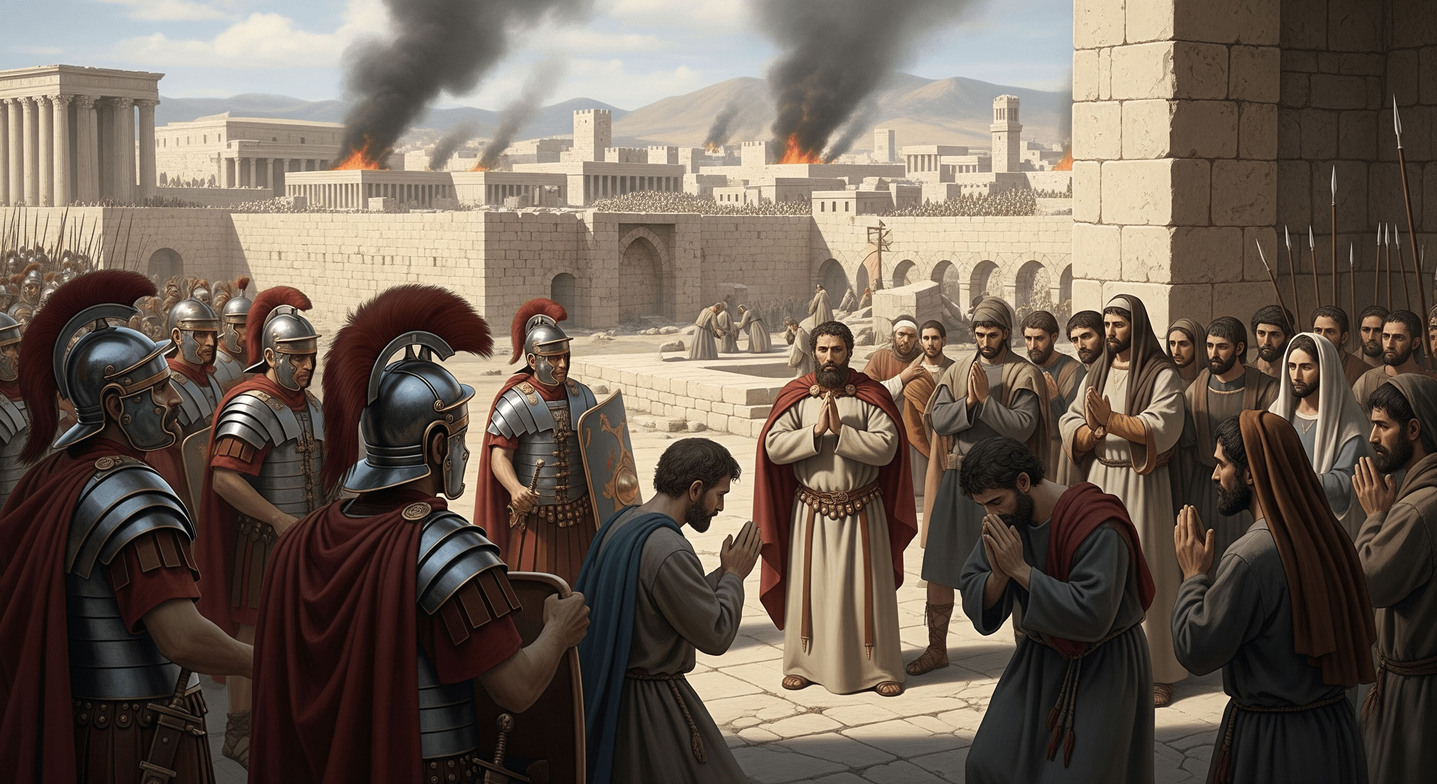
Paul Released from Prison
At the end of Acts 28, Paul was in prison for the charge of bringing a Gentile into the Temple (Acts 21:26-36) at Jerusalem, and that imprisonment occurred around 61-63 A.D. After being released from the Roman prison, Paul appears to have traveled to several destinations. Clement of Rome, writing to the Corinthians 30 years later, mentioned that Paul “reached the farthest bounds of the west” (Pollock, The Apostle, p. 298). Did that mean present day Spain? If so, Paul could have been there around two years.
Paul’s writings mention that he had been at Miletus (2 Timothy 4:20 – western coast of present-day Turkey) and that he planned to spend a winter at Nicopolis (Titus 3:12 – western Greece). Two of Paul’s epistles, 1 Timothy and Titus, appear to have been written shortly after Paul’s release. From those writings we discover that Paul left Timothy to pastor the church in Ephesus (1 Timothy 1:3-4), while Titus was left in Crete to pastor there (Titus 1:5).
James Dies as a Martyr
James, the half-brother of Jesus, was one of the leaders of the church in Jerusalem. While Paul was in prison in Rome, James faced persecution in Jerusalem. Once the Roman governor Festus died there was a delay waiting for the next governor. Josephus writes that the Jewish High Priest, Ananus, used this opportunity to convene the Sanhedrin and bring charges against James and some others. The Sanhedrin convicted James and sentenced him to be stoned to death. So, James died as a martyr around A.D. 62.
The Book of Hebrews
The book of Hebrews appears to have been written sometime around A.D. 60 – A.D. 70. Although the author of Hebrews is not known, whoever wrote the book made several references to the Levitical priesthood and the Old Testament sacrifices. This might indicate that the temple was still in use. Also, there is no reference to the destruction of Jerusalem and the temple (A.D. 70), so the book was likely written before that event.
The intended audience for this book was Jewish Christians, some of whom had faced considerable persecution (Hebrews 10:32-39, 12:3-12) and might have been contemplating an abandonment of the Christian faith (Hebrews 6:4-6). Likewise, the book has several encouragements to persevere in the faith (Hebrews 6:9-12), including a series of heroes in chapter 11 who have demonstrated faithfulness in very difficult circumstances. Near the end of the book, we discover that Timothy was imprisoned but has been released (Hebrews 13:23).
Peter and Paul Are Executed (67-68 A.D.)
When Nero became the Roman emperor, he appeared to have a strong desire to build. In order to create space to fulfill his dreams of building, he is said to have set on fire certain areas of Rome. However, the fire was said to have made the Roman people feel that the gods they worshipped were not able to protect the people. As word spread that Nero may well have been the cause of the fire, Nero felt that he needed to redirect the people’s anger so that Nero himself would not be blamed.
Because Christians refused to worship the emperor, the Roman people questioned the Christian’s loyalty to the government. So, when Nero attempted to deflect the anger of the Roman people, Christians were a convenient scapegoat.
With popular anger now directed against Christians, persecution broke out (A.D. 64-68) and some leaders, including Peter and Paul, were imprisoned. This was Paul’s 2nd imprisonment in Rome, and the tone of his 2nd letter to Timothy is characterized by reflection on the past, a lack of hope (2 Timothy 4:6-8) and a series of final instructions (2 Timothy 4:9, 14-15).
A strong belief in the early church was that Peter and Paul were executed on the same day. Church tradition claims that Peter was crucified upside down. Since Paul had Roman citizenship, he would have been beheaded.
Jerusalem was Overthrown and Destroyed in A.D. 70
A surge of Jewish nationalism led to a great uprising in A.D. 66 in Judea. That uprising escalated into a confrontation with the Roman authorities that culminated in a siege of Jerusalem. That siege lasted almost 5 months before the Roman army captured Jerusalem then looted and burned the temple in A.D. 70. The spoils that the Roman general Titus carried back to Rome included a menorah, as well as the table of showbread, both from the temple (Metzger, The New Testament, p. 54).
It is estimated that a million Jews died in the siege and destruction of Jerusalem from disease, famine and violence. Many that survived were then taken into slavery. After this event the Jewish community was shattered and scattered. For Jewish Christians, a scattering abroad, somewhat similar to the scattering after the stoning of Stephen (Acts 8:1, 11:19) had happened again, but likely in a much greater extent.